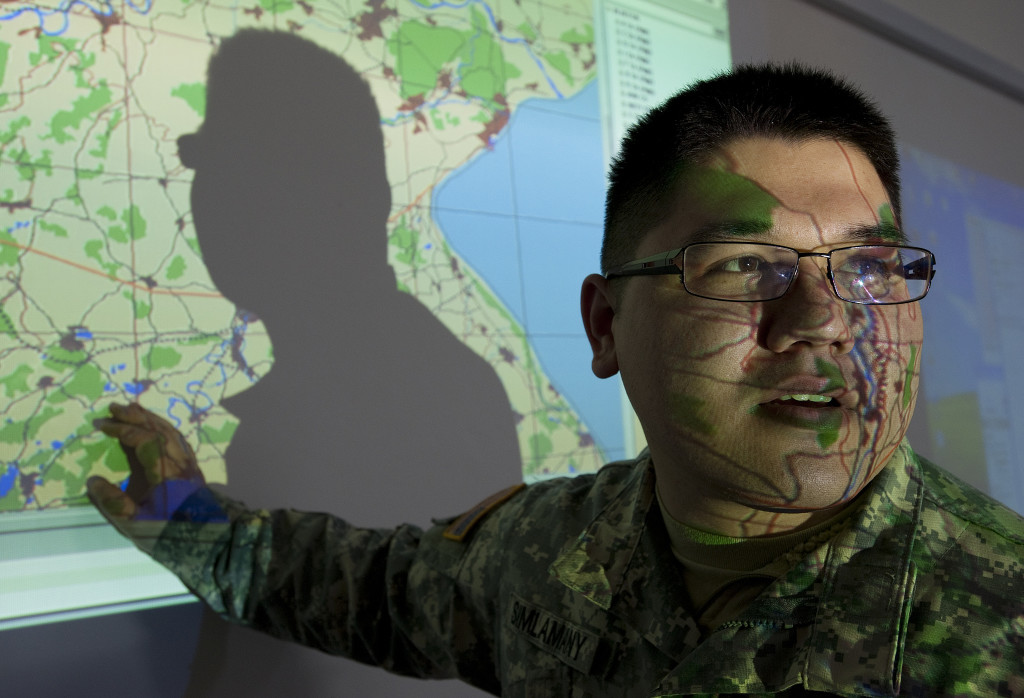(W)Archives: PowerPoint, 1944

In 2009, War on the Rocks contributor Colonel T.X. Hammes wrote a famous and scathing essay. He noted that the Defense Department spends enormous amounts of money every year educating its people. However, upon graduation from their particular institutions these professionals “return to a world driven by a tool that is the antithesis of thinking.” He referred, of course, to PowerPoint. This software package was, he wrote, “actively hostile to thoughtful decision-making.” Instead of writing about an issue in clear and thoughtful prose, action officers craft “bullets,” waste time selecting or creating superfluous images, and are forced to decide what font and colors they will use. Then they present this finely crafted content and analysis challenged slide deck to leaders and stand by for a decision that usually adheres to the “garbage in, garbage out” rule.
Colonel Hammes was on the right track. However, PowerPoint did not create the problem, it merely exacerbated it. Consider this document. It is an excerpt from “Special Research History 185, The War Experiences of Alfred McCormack,” which resides at the library of the National Cryptologic Museum just outside the gate of the National Security Agency. These are recollections of a senior member of the War Department’s intelligence office during World War II. In them, McCormack rails against General Clayton Bissell, the War Department G-2 who was Army Chief of Staff George C. Marshall’s chief intelligence officer.
Bissell, it seems, loved his G-2 Morning Meeting. For him, however, it was not an intellectual exercise, but rather an opportunity to look at pretty pictures. Indeed, “his appetite for visual aids was insatiable,” McCormack recalled. As the senior intelligence analysts gave their briefings each morning, Bissell expected to see ever new and better maps and charts at their side. His demand for visual aids grew so great that the two non-commissioned officers who had carried maps to the meeting before he took over no longer sufficed. A “special truck” had to be built to carry the maps. McCormack wrote that “if there was the faintest excuse for a picture, a series of pictures had to be obtained.” If a map or chart “was a new one and was pleasing to the eye, the G-2 would smile contentedly. Maps were tinted in delicate pastel shades and soothing color combinations found favor.” The “best minds” had to be put on the problem of what kind of acetate would cover the maps. The acetate around the edge of each visual aid had to be secured with colored Scotch tape…but it had to be the right color of Scotch tape.
McCormack noted that Bissell never gave commendations to analysts who worked all night to do important analytical work, but showered praise on people who invented “some new shade of pink on a map.” Moreover, Bissell cared little about the correctness of his analysts’ conclusions, but the formatting and paper clipping of the briefing notes was of intense interest to him.
Was Clayton Bissell exceptional? Certainly most of us are not senior officers with hundreds of people at our beck and call. In 1944, it took that level of authority to have dozens of visual aids, each with pleasing colors and clever photographs. Today, however, PowerPoint has put this visual cotton candy within the reach of all of us.
Next time you put together a PowerPoint briefing, stop for a moment and ask yourself if you aren’t letting out your own internal Clayton Bissell. You may not like the answer that comes back.
Mark Stout is a Senior Editor at War on the Rocks. He is the Director of the MA Program in Global Security Studies and the Graduate Certificate Program in Intelligenceat Johns Hopkins University’s School of Arts and Sciences in Washington, D.C.
Photo credit: The U.S. Army

